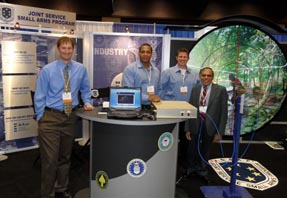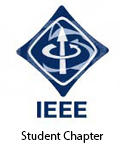
Exploitation of Noise as Signals for Sensing and Communications
Ram Narayanan, Professor of Electrical Engineering
Radar and Communications Lab
Department of Electrical Engineering
Noise is usually considered undesirable in systems because it corrupts and causes errors in measurements. The problem is all the more acute if the noise level is high compared to the “desired” signal. Several techniques are used to reduce noise and mitigate its effects in order to improve the signal-to-noise ratio (SNR) during signal detection. However, noise can also be exploited as a useful “signal” in several engineering applications, with performance comparable to traditional pulsed and frequency-modulated waveforms. Noise waveforms possess very desirable properties, such as covertness, low probability of detection, anti-jam, resistance to electromagnetic interference, and spectral parsimony.
Dr. Ram Narayanan’s research work focuses on the exploitation of noise as the “desired” signal in applications involving radar sensing and surveillance, communications, networking, and material diagnosis. In the area of radar, he has used noise waveforms for detecting buried mines and improvised explosive devices (IEDs), targets hidden behind dense foliage, humans behind building walls, and concealed weapons. He has developed techniques using noise signals for radio frequency (RF) tag communications, radar networking, and multiple-input-multiple-output (MIMO) radar applications. He has developed a covert noise communication system which appears unpolarized to the arbitrary observer, but is intelligible to the intended recipient. His work with tailored noise, i.e. noise whose spectral and temporal characteristics have been optimized by matching them to the environment, has resulted in enhanced target detection capability. His theoretical research work has been thoroughly validated using noise radar and communications systems constructed and field-tested by his students.
Dr. Narayanan’s work has been sponsored by both government agencies (NSF, NASA, FRA, ARO, ARL, AFOSR, AFRL, ONR, NRL, US Army Corps of Engineers, US Army ARDEC, and MDA) as well as private industry (EPRI, Pacific Gas & Electric, Raytheon, and Centurion International). He is currently funded by AFOSR, ARO, and NRL.
Relevant recent publications include:
J. Chuang and R.M. Narayanan, “Performance of non-polarized noise modulated communications system in the presence of interference,” Wireless Personal Communications, vol. 65, pp. 773–796, 2012.
W.J. Chen and R.M. Narayanan, “GLRT plus TDL beamforming for ultrawideband MIMO noise radar,” IEEE Transactions on Aerospace and Electronic Systems, vol. 48, pp. 1858–1869, July 2012.
P.H. Chen, M.C. Shastry, C.P. Lai, and R.M. Narayanan, “A portable real-time digital noise radar system for through-the-wall imaging,” IEEE Transactions on Geoscience and Remote Sensing, vol. 50, pp. 4123–4134, October 2012.
M.C. Shastry, R.M. Narayanan, and M. Rangaswamy, “Waveform design for compressively sampled ultrawideband radar,” Journal of Electronic Imaging, vol. 22, Paper # 021011, 11 pages, April–June 2013, doi: 10.1117/1.JEI.22.2.021011.
Y. Kwon, R.M. Narayanan, and M. Rangaswamy, “Multi-target detection using total correlation for noise radar systems,” IEEE Transactions on Aerospace and Electronic Systems, vol. 49, pp. 1251–1262, April 2013.
S.C. Surender, R.M. Narayanan, and C.R. Das, “Cross-layered resource allocation in UWB Noise-OFDM-based ad hoc surveillance networks,” EURASIP Journal on Wireless Communications and Networking, vol. 2013, Article 4, 24 pages, 2013, doi: 10.1186/1687-1499-2013-4.


